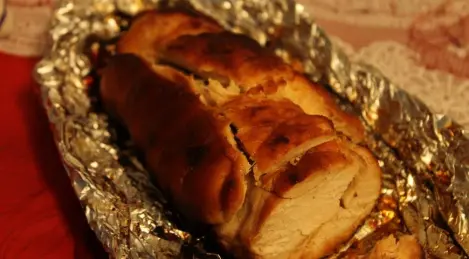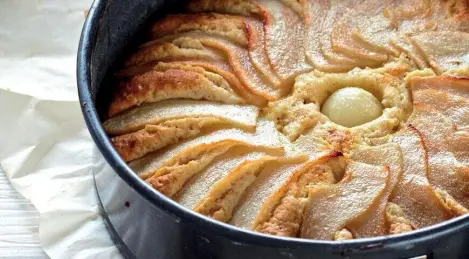Japanese sweet bread

How to cook Japanese sweet bread
Step 1
Prepare the brew. In a small bowl, mix flour with water into a smooth paste. Heat over low heat to 65°C. At this point, the mixture will thicken and the bottom of the ladle will be visible as you stir. Remove it from the stove, put a film and cool the mixture to room temperature. You can cook the mixture in advance and store in the refrigerator for 1 day. If the brew is gray, don't use it!
Step 2
Knead the dough. Dissolve the yeast in the water, keeping a small amount of water. In a mixer bowl, mix flour with salt, add yeast solution, milk powder, sugar, egg and tea leaves. Knead a soft dough, adding water if necessary. At the end of the batch, add butter.
Step 3
Transfer the dough to a clean bowl greased with vegetable oil, tighten with cling film and leave to ferment for 60-90 minutes. at a temperature of 28-30°C. After 30 min. from the start of fermentation, punch down the dough using the “stretch and fold” method.
Step 4
Divide the dough into 12 equal parts, roll into a ball, cover with cling film and leave for 10 minutes.
Step 5
Roll each ball into an oval and roll up. Grease a rectangular pan with butter and place the buns in it at some distance from each other. Cover with foil and leave to proof for 60-75 minutes. at a temperature of 28-30°C.
Step 6
Bake the buns at 190°C for 12-15 minutes, until golden brown.
Reviews: 0
0 Overall ratingHave you already prepared this recipe? Tell what you think.
Write a review
Trending

Khinkal in Dagestan style
Khinkal is a traditional Caucasian dish. It is often confused with such a famous Georgian dish as khinkali. And, although the set of products in both dishes is quite similar, they are nevertheless different. Traditionally, khinkal is prepared on the

Ginger tincture
Ginger is a well-known and beloved spice. In the kitchen, only the root of the plant is used, which is rightfully considered one of the most useful natural products. Ginger tincture, when consumed in moderation, helps improve memory, restores skin co

Kharcho with chicken
Usually kharcho is cooked in beef broth. But we decided to break the rules to get a slightly different, but no less tasty dish. Kharcho based on chicken will be more dietary, but in taste it will be the same famous Georgian soup, which you can easily











